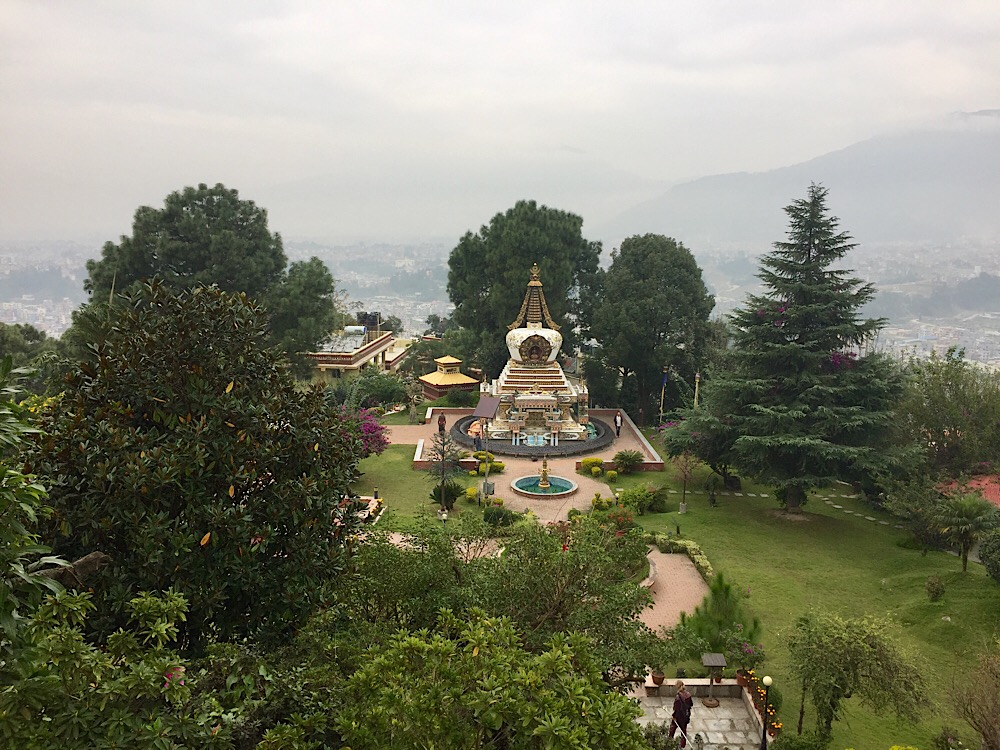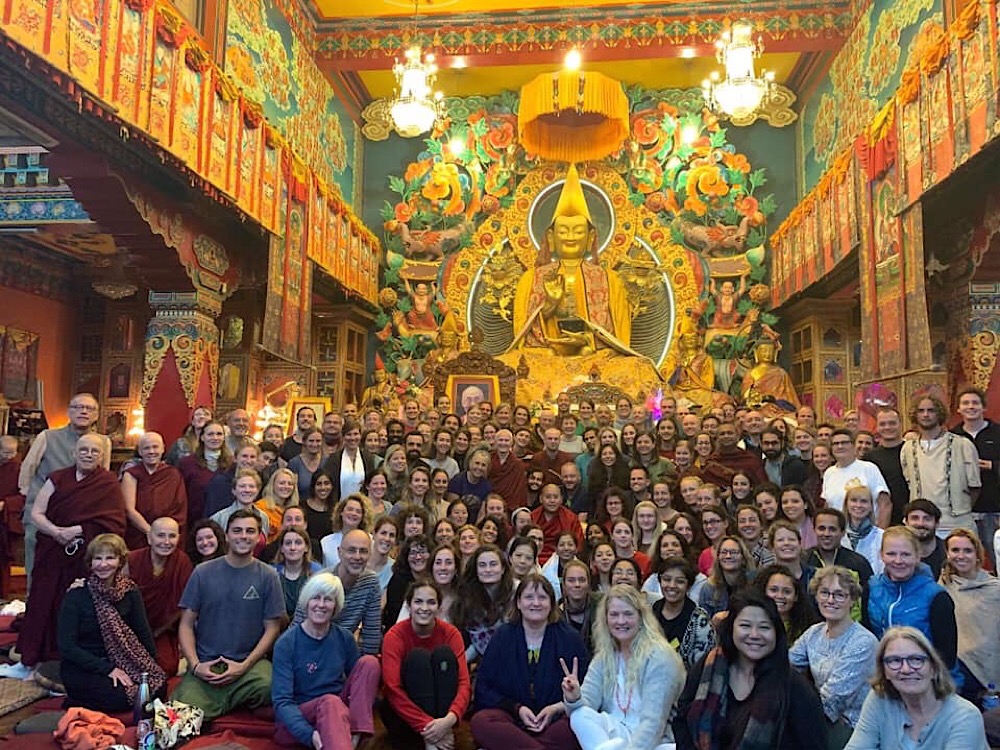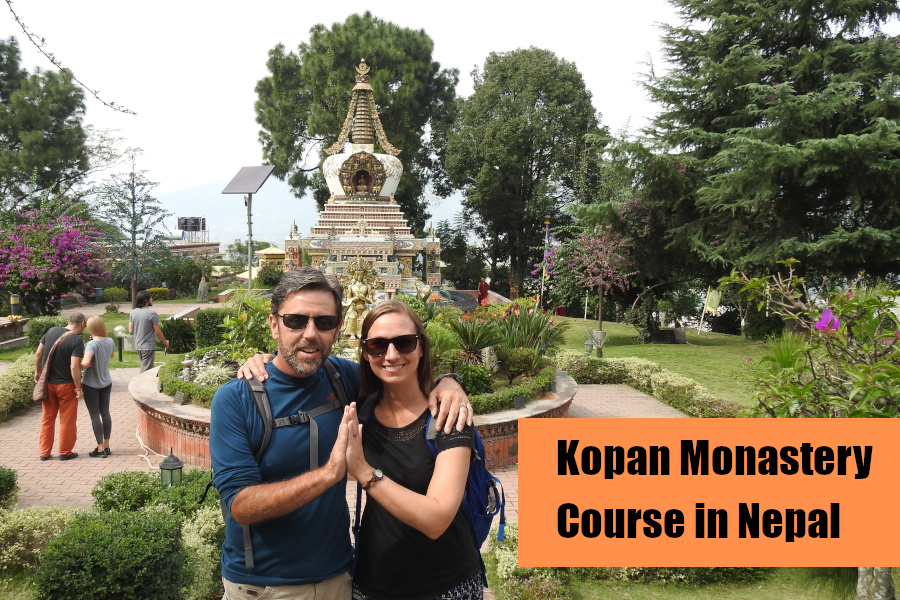We spent one week staying at Kopan Monastery in Kathmandu, Nepal to take a course called “Tools for Happiness” that was based on Buddhist principles and teachings. During the course we had no internet or cell service and checked in our electronics at reception on arrival. For eight days we focused on meditating, learning, and practicing kindness and compassion.
I am not an aspiring Buddhist but we both wanted to learn more about Buddhism and meditation. Both are central to life in many of the countries we are visiting and we wanted to gain a better understanding. In the course we discussed topics such as attachment, kindness, compassion, anger, karma, and aversion. We meditated five times a day and had silent hours from 10:00 pm to 12:00 pm the next day plus one full day of practicing complete silence with no distractions such as reading allowed. We were split up by gender in the housing and Rob and I were assigned roommates we did not know. After being around each other 24/7 for months while traveling we had some time to be independent which was not a bad thing.
About 160 people from different parts of the world attended the course. The teacher was from Australia and was very open about her interesting path to becoming an ordained Tibetan Buddhist nun after 30 years of marriage and being a mother.

Kopan Monastery is perched on a hilltop just outside Kathmandu. We stayed on the grounds throughout the entire course. We met for our teachings and discussions inside a building known as the Gompa where we sat on the floor on cushions. Our first meditation of the day began at 6:45 am and our last teaching usually wrapped up around 9:00 pm so it was pretty intense. So much learning was packed into every day that I was exhausted and in bed by 10:00 pm each night.

We were served three vegetarian meals a day in the dining hall. Breakfast was usually simple porridge and bread. Lunch was usually the largest meal of the day with vegetables, rice, and curry or something similar. Dinner was usually simple vegetable soup and bread. Kopan has a lovely stupa garden, a cafe, a bookstore, a library, and a small shop on the monastery grounds. We did not interact with the monks who live at Kopan very much but in the evenings we could hear them chanting for hours.

Ling Rinpoche visited the monastery one day and we were allowed to sit in the back of the Gompa during his welcoming ceremony, which involved tea, rice, cookies, and a great deal of chanting by the monks. Ling Rinpoche is recognized as the reincarnation of the Dalai Lama’s Principal Tutor who died in 1983 and his surprise visit was highly celebrated at the monastery.

He also gave a talk to our class in the evening about happiness and compassion through an interpreter. He even took questions from our class and offered to be in a group photo, which is pictured below. I was on the side so am actually cut out of the photo but I love it anyway and you can see Rob toward the back if you look carefully. Ling Rinpoche was quite generous with sharing his time and wisdom with us.

The time at Kopan Monastery spent reflecting on my mind and how it affects my words, actions, and relationships during this course was extremely insightful. I am certain some of the principles I learned can be tremendously helpful to me in letting go of ways of thinking that hinder happiness as long as I continue to work on them. I hope to continue a meditation practice moving forward that will help me improve my patience and diminish negative emotions in order to create more peace. The Buddhist way is not to speak about Buddhism too much unless asked about it first so if you ever want to know more about what we learned ask me next time you see me.


I look forward to hearing more about this enlightening experience!
Delightful reading and photos !! Really enjoyed it. Ommmmmmmmmmmmmmmm !!!!!